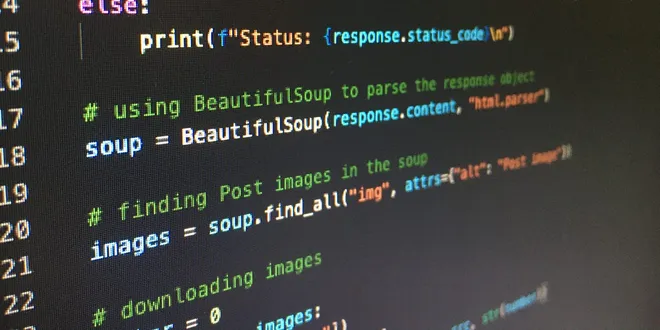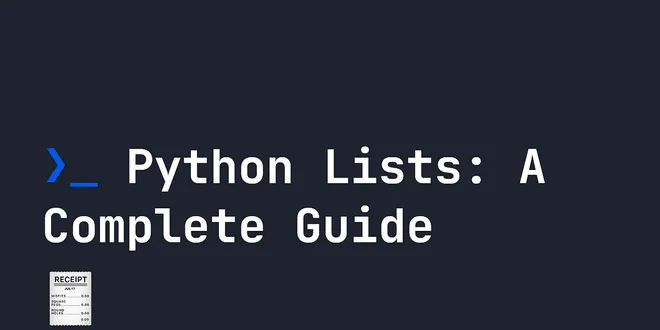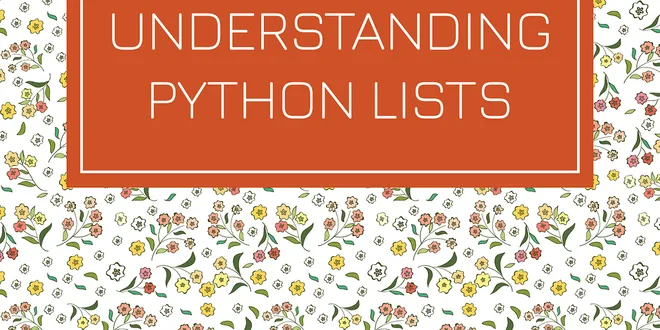AI-powered search & chat for Data / Computer Science Students
Learn more with these recommended learning resources

Lists in Python
In python, a list is delimited by the characters ‘[]’. The characters ‘[]’, alone, designate an empty list. An example of a list is [‘Guido van Rossum’, ‘Bjarne Stroustrup’, ‘James Gosling’], which…
Read more at Towards Data Science
Python Lists II
In the previous post, we had gone through list creation, indexing and slicing. Let us explore the power of lists further. The operation of adding elements at the end of a mutable sequence is known as…...
Read more at Analytics Vidhya
Python Lists III
In the previous post, we had gone through list operations such as append, deletion and sorting. Let us explore the power of lists further. Using the count( ) method, we can find the number of…
Read more at Analytics Vidhya
Python List
Python for Beginner Series — Part 7 Continue reading on Python in Plain English
Read more at Python in Plain English
Python Lists
Python has a great built-in list type named "list". List literals are written within square brackets [ ]. Lists work similarly to strings -- use the len() function and square brackets [ ] to access d...
Read more at Google's Python Class
Python Lists
List type is another sequence type defined by the list class of python. List allows you add, delete or process elements in very simple ways. List is …
Read more at ThePythonGuru
Python chapter 2: Lists in Python
In this article, we are going to learn about Lists in Python programming and we’ll learn everything about Python lists such as: We have many useful list methods in Python that makes it really easy to…...
Read more at Level Up Coding
More about Lists in Python
In the last section of this Python Tutorial Series, We talked about Python Lists and understood them with some examples. In this article, we will go a step further. We will add some built-in Python…
Read more at Python in Plain English
Python List - I
There are four collection data types in the Python programming language: Lists, Tuple, Set and Dictionary. In this section, we will learn about list. In Python, a list is created by placing all the…
Read more at Analytics Vidhya
List
List List is a container data type, similar to tuple , with lots of added functionality and mutable . Lists are typically used to store and manipulate ordered collection of values. Tuple and Sequence ...
Read more at 100 Page Python Intro
Python List Programs For Absolute Beginners
A Python List can be easily identified by square brackets [ ], which is used to store the data items where each data item is separated by a comma.
Read more at Analytics Vidhya
Manipulating Lists in Python
Using Lists to Create Additional Data Structures in Python Continue reading on Towards Data Science
Read more at Towards Data Science
Manipulate Python lists
Coming from an ops world makes you uncomfortable with lists at first. These kind of data types do exists in bash, but I’m not lying if I say that no one is using them. So what’s a list in Python ?
Read more at Analytics Vidhya
Python 101: Learning About Lists
Lists are a fundamental data type in the Python programming language. A list is a mutable sequence that is typically a collection of homogeneous items. Mutable means that you can change a list after i...
Read more at Mouse Vs Python
5 Basic Commands For Working with Python Lists
Making you understand the characteristics of Python Lists and how you deal with them Continue reading on Towards Data Science
Read more at Towards Data Science
Introduction to Python Lists
As mentioned before, each element in a python list is stored in an ordered sequence. Each element is given an index position starting from zero. In order to access these elements, you use the list…
Read more at Python in Plain English
Up Your Coding Skills with Python: Lists
Part 3: A quick review of some of the most frequently used methods available for ‘list’ objects in Python. Continue reading on Python in Plain English
Read more at Python in Plain English
Python Lists: A Complete Guide
Lists are a lot like Arrays in other languages and are an important way to store data in Python. Let’s look at how they work Continue reading on Python in Plain English
Read more at Python in Plain English
Understand Python Lists
The Python programming language has a lot of different compound data types used to group other value types but, lists happen to be the most versatile among all the other compound data types in…
Read more at Python in Plain English
Lists
A list in Python is a sequence data type used for storing a comma-separated collection of objects in a single variable . Lists are always ordered and can contain different types of objects (strings, i...
Read more at Codecademy
Everything you need to know about lists in Python
Become an advanced developer using Python by learning various functions and ways to use/modify lists in a simpler, pythonic, efficient, and faster way.
Read more at Towards Data Science
Python List Comprehension
List Comprehension is one of the most powerful features available in dealing with Python lists. This feature is already at your fingertips. No need to import any library or modules, since list…
Read more at Towards Data Science
Python List Methods
In Python, a list is a collection of pieces of data. A list is surrounded by square brackets [ ] with each item separated by a comma ( , ), and can contain anywhere from zero to infinity items (or…
Read more at Towards Data Science
Python List - II
We can use the .split(separator) function to divide a string into a list of strings using a specified separator. The separator tells Python where to break the string. If no separator is specified…
Read more at Analytics Vidhya- «
- ‹
- …

